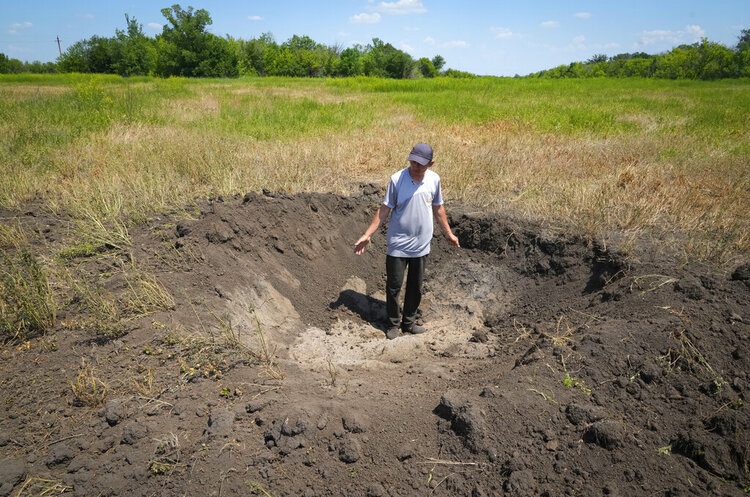A field worth thermal plant: Some agro enterprises were classified as critical infrastructure. How to get into the "magic" list?
And what it will change in the work of farmers

Since October 10, the russian federation has launched attacks on Ukraine's energy infrastructure. This has affected many businesses – according to updated estimates, russia has damaged about 60% of the energy system with its bombardments.
The work of agricultural businesses was also disrupted. Before the outbreak of the full-scale war, agriculture accounted for a fifth of Ukraine's economy, and in August 2022 made up the third part. Timely harvesting, processing and exports, in particular, depend on the smooth operation of agricultural enterprises. Under regular blackouts, these processes have to be prolonged in time. On December 20, 2022, the Cabinet of Ministers of Ukraine, by its Resolution No. 1384, included the sectors of the agro-industrial complex in the list of critical infrastructure facilities.
What exactly this regulation will change in the life of the agro-industrial complex, Suzanna Grygorenko, Director of Seed Association of Ukraine, explained exclusively to Mind.
The agro-industrial complex is a critical infrastructure
Legally, critical infrastructure is considered to be the objects that are important for the economy, national security, defence, or the disruption of which may harm national interests. This list now includes new sectors of the agro-industrial complex, since food security for both the domestic market and external consumers will depend on their functioning.
There is a long chain of manufacturing behind the products that end up on the shelves. From farmers, seed companies, manufacturers of plant protection products to logistics, processing facilities and related companies. Now, given the scarcity, there are companies for which receiving the necessary volumes of electricity for production is critical.
In the new resolution, the Cabinet of Ministers included those companies in the "Food industry and agro-industrial complex" sector that are involved in producing and processing agricultural and/or food products, as well as operating irrigation systems and canals.
Although not everyone can be included in the list – in the questionnaire to be sent to the Ministry of Agrarian Policy, one has to outline the main services that the company receives or provides to other critical infrastructure facilities, and which will not be able to run properly without them.
For instance, Ukrainian seeds are not only our future harvests, but also a commodity and a significant portion of the agro-economy. But in order to export it, you need to select a quality product, dry it, buy or produce a chemical seed dresser, and process the seeds. Laboratory control is required at each of these stages to ensure that everything meets the declared standards. All these processes are accompanied by electricity consumption; many enterprises have long been upgraded and automated their production.
What does the resolution of the Cabinet of Ministers change?
Now the approved agricultural enterprises will be able to connect to the power supply as critical infrastructure facilities. This means that they will be able to continue to fulfil their obligations without stopping production processes.
Food producers have a production cycle that is not shorter than that of seed companies, and they create a value-added product. It can then be exported, which will bring foreign currency into the Ukrainian economy.
Power cuts and blackouts are a significant blow to manufacturing enterprises. Harvesting had been completed, but autumn sowing continued until the end of November, while the drying of the crop continues. Therefore, in the conditions of electricity shortage, it was necessary to take measures that would stabilise the situation for enterprises. The inclusion of agricultural companies in the critical infrastructure is one of them.
What will happen to grain exports in 2023?
We cannot predict the immediate impact yet. Ukrainian farmers still face a logistical challenge, as more than 90% of grain was shipped by sea before the war. By December 2022, 21.5 million tonnes of grains were exported from Ukraine, while in 2021 the volume was 29.3 million tonnes for the same period – the difference made almost 30%.
This year companies created transitional stocks, which were not typical for the producers for a long time. APK-Inform estimated that the stocks of wheat alone amounted to 5.3–5.5 mln tonnes at the beginning of the 2022/23 marketing year (1.5 times higher than in the previous season).
Due to heavy precipitation in 2022, farmers were unable to harvest crops (for example, corn) on time, because in case of high humidity, it must be immediately transported to dryers that are usually powered by electricity or gas. Significant rise in price of fuel, insurance, transportation lead to changes in prices for grain products. This directly affects the income, the reduction in which leads to a decrease in sowing, for example, winter crops.
The OpenMind authors, as a rule, are invited experts and contributors who prepare the material on request of our editors. Yet, their point of view may not coincide with that of the Mind editorial team.
However, the team is responsible for the accuracy and relevance of the opinion expressed, specifically, for fact-checking the statements and initial verification of the author.
Mind also thoroughly selects the topics and columns that can be published in the OpenMind section and processes them in line with the editorial standards.



